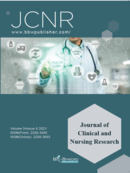Abstract
Pelvic abdominal adhesion is a major problem in obstetrics and gynecology. The occurrence of adhesion complications, the difficulty and risk of adhesion reoperation, and the problem of postoperative adhesion not only cause great trouble to the physical and mental health of patients, but also increase the economic burden for the family and social medical system.
References
Xing C, Cheng Z, Shi Y, et al., 2005, Relationship between Pelvic Adhesion and Infection with Chlamydia Trachomatis and Ureaplasma Urealyticum. Chinese Journal of Clinical Obstetrics and Gynecology, 6(1): 25-28.
Barcz E, Milewski ?, Dziunycz P, et al., 2012, Peritoneal Cytokines and Adhesion Formation in Endometriosis: An Inverse Association with Vascular Endothelial Growth Factor Concentration. Fertility and Sterility, 97(6): 1380–1386.e1.
Hu Q, Xia X, Kang X, et al., 2017 A Review of Physiological and Cellular Mechanisms Underlying Fibrotic Postoperative Adhesion. International Journal of Biological Sciences, 17(1): 298-306.
Fischer A, Koopmans T, Ramesh P. et al., 2020, Post-Surgical Adhesions are Triggered by Calcium-Dependent Membrane Bridges between Mesothelial Surfaces. Nature Communications. 11: 3068.
Uyama N, Tsutsui H, Wu S. et al., 2019, Anti-interleukin-6 Receptor Antibody Treatment Ameliorates Postoperative Adhesion Formation. Scientific Reports. 9:17558.
